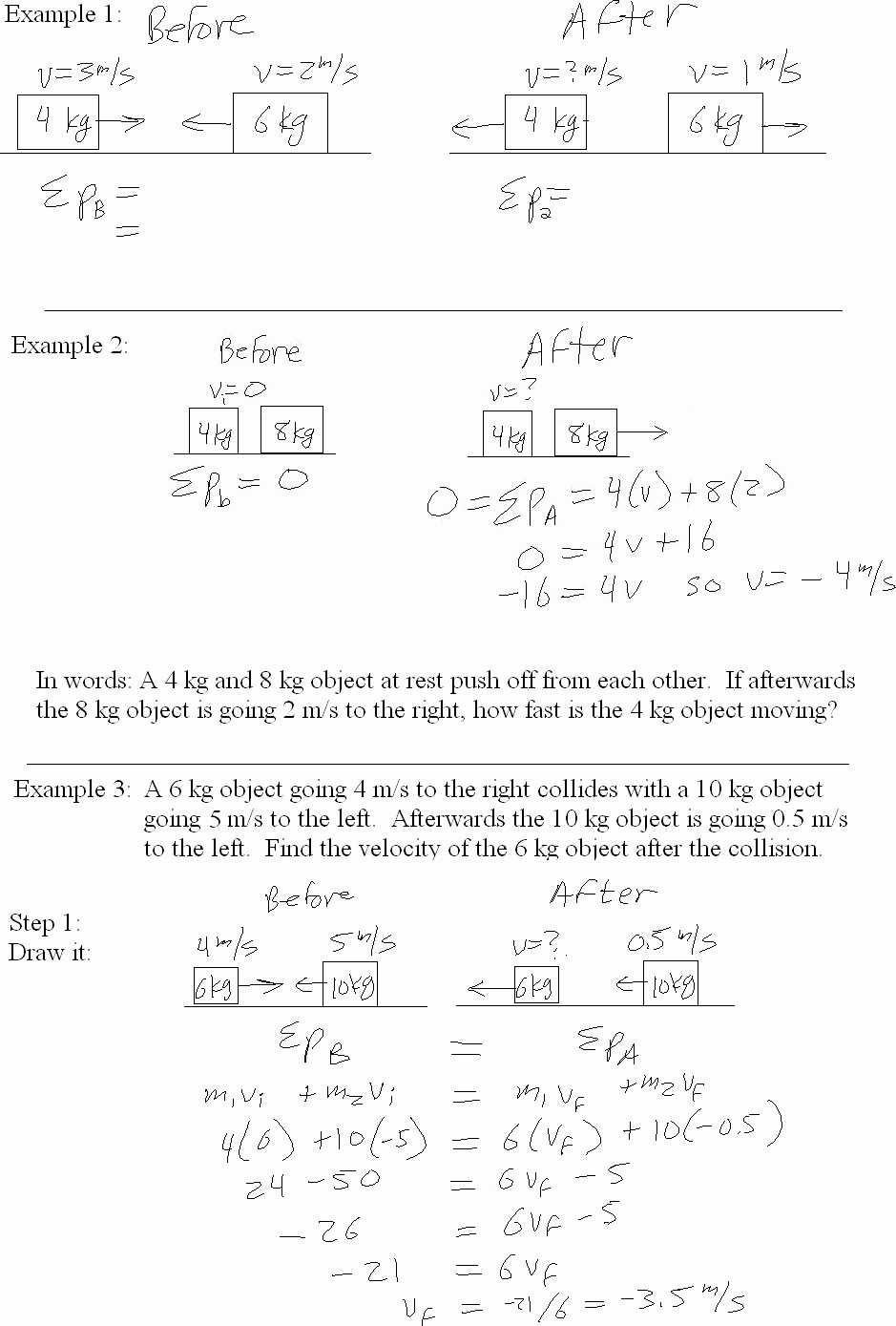

On the 2 kg mass, there is a force of 5 N inclined 45o above horizontal. Finally, on the 5 kg mass, there is a force of 2 N in the negative y direction.

Two masses, m1 and m2, m1 being larger, are connected by a spring.įind the resultant acceleration of the system. In what direction does the system travel? They are placed on a frictionless surface and separated so as to stretch the spring.

What is the velocity of the ball after the force has acted on it?.From our equation relating impulse and velocity, it is logical to define the momentum of a single particle, denoted by the vector p, as such: p= mv.Again, momentum is a vector quantity, pointing in the direction of the velocity of the object.From this definition we can generate two every important equations, the first relating force and acceleration, the second relating impulse and momentum.A particle has linear momentum of 10 kg-m/s, and a kinetic energy of 25 J.Relation between force and acceleration:.If we take a time derivative of our momentum expression we get the following equation.A 2 kg bouncy ball is dropped from a height of 10 meters, hits the floor and returns to its original height.What was the change in momentum of the ball upon impact with the floor? What was the impulse provided by the floor?.A ball of 2 kg is thrown straight up into the air with an initial velocity of 10 m/s.Using the impulse-momentum theorem, calculate the time of flight of the ball.Work done is a change in kinetic energy.Suppose we have a system of N particles, with masses m1, m2,…, mn.Assuming no mass enters or leaves the system, we define the total momentum of the system as the vector sum of the individual momentum of the particles:.If the net external force is zero, then the total momentum of the system is constant.Remember that momentum is a vector quantity.

A 60 kg man standing on a stationary 40 kg boat throws a.With what speed does the boat move after the man throws the ball? Assume no friction between the man and the boat. 05 kg bullet is fired at a velocity of 500 m/s, and embeds itself in a block of mass 4 kg, initially at rest and on a frictionless surface.An object at rest explodes into three pieces.Two, each of the same mass, fly off in different directions with velocity 50 m/s and 100 m/s, respectively. What is the magnitude and direction of its velocity? A third piece is also formed in the explosion, and has twice the mass of the first two pieces.A spaceship moving at 1000 m/s fires a missile of mass 1000 kg at a speed of 10000 m/s.What is the mass of the spaceship it slows down to a velocity of 910 m/s?.Collision - The brief direct contact between two bodies that results in a net impulse on each body.Elastic Collision - Any collision in which kinetic energy is conserved.Inelastic Collision - Any collision in which kinetic energy is not conserved.Completely Inelastic Collision - Any collision in which the two bodies stick together.


 0 kommentar(er)
0 kommentar(er)
